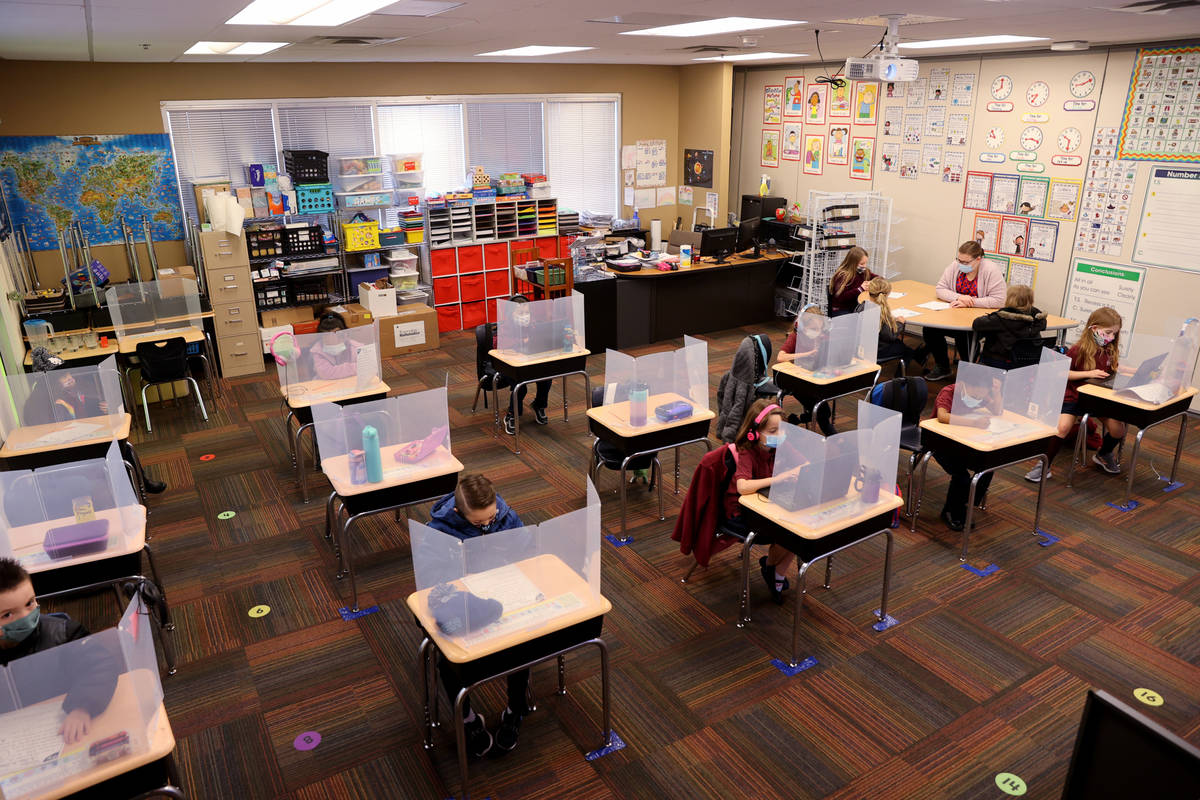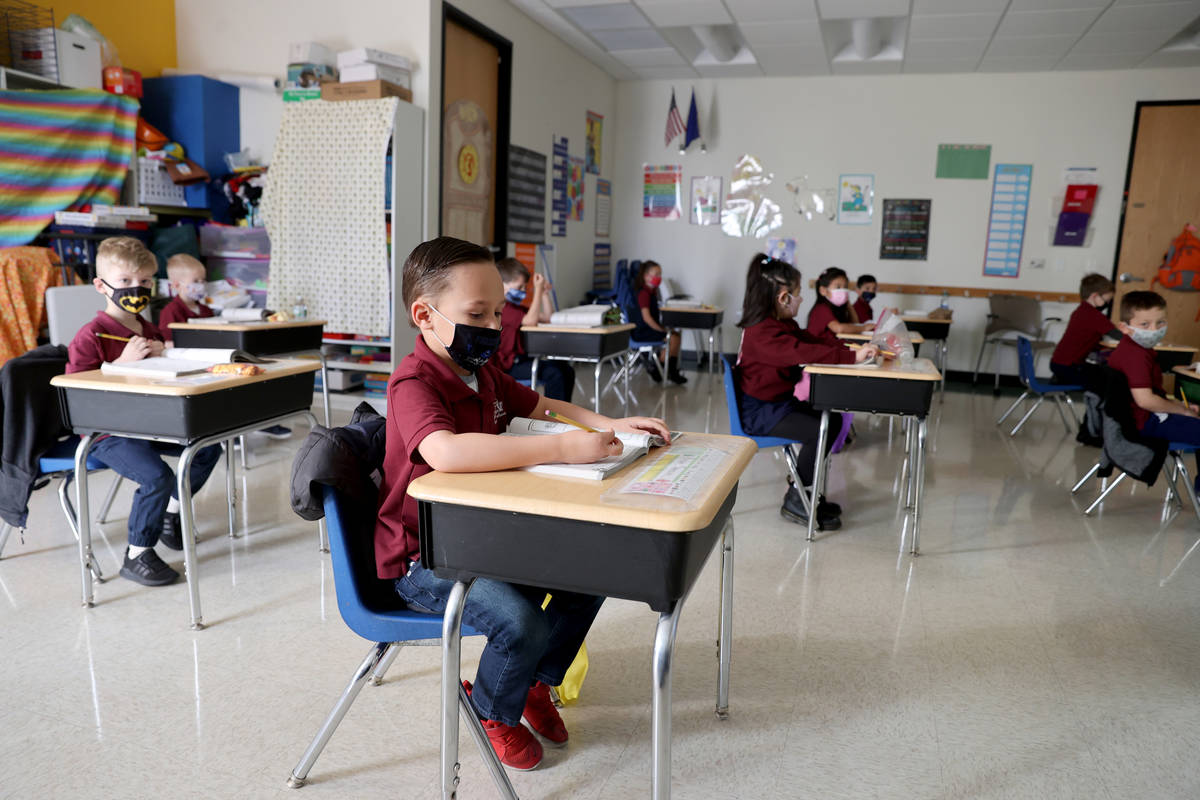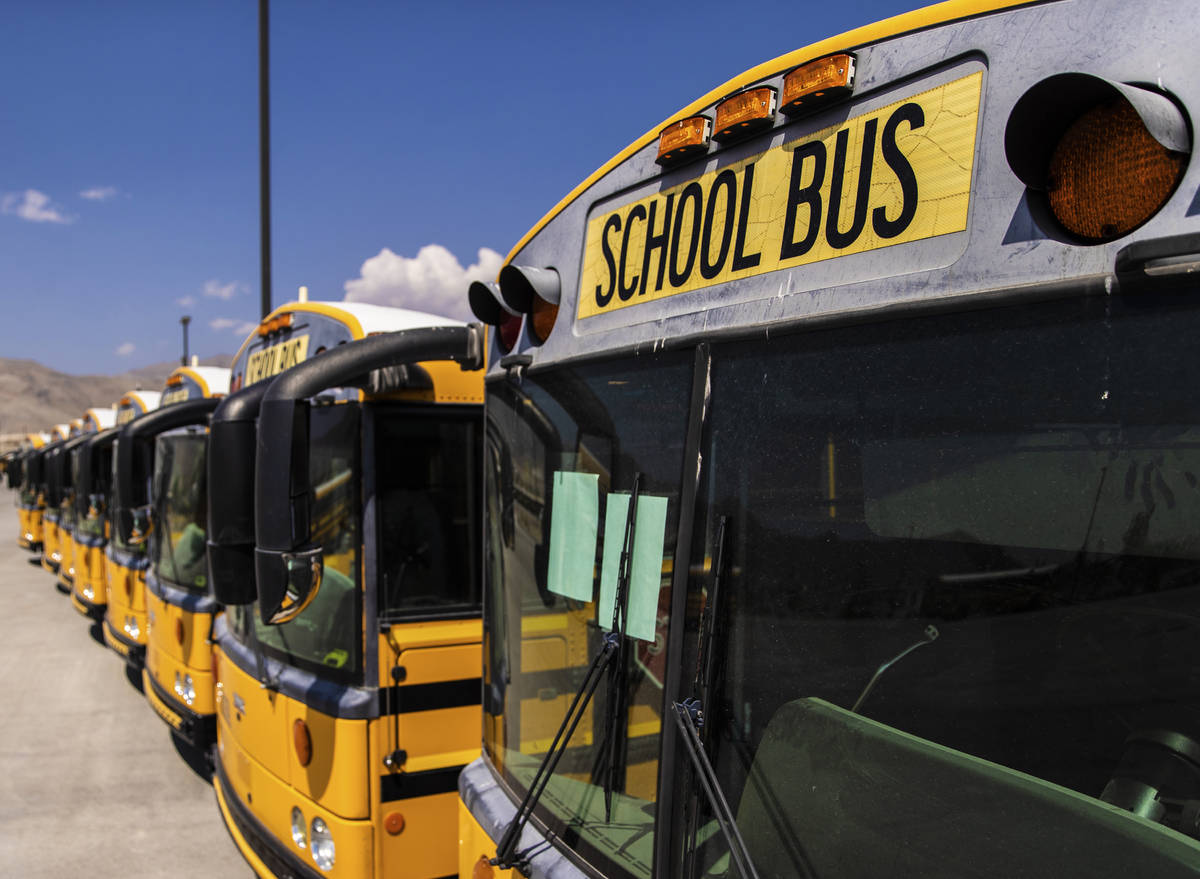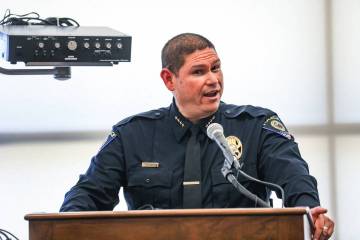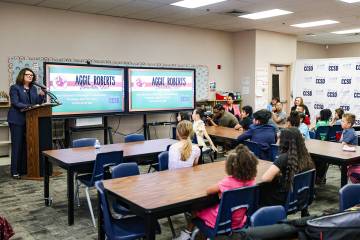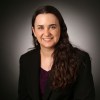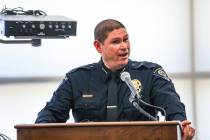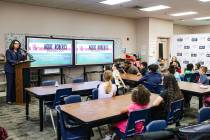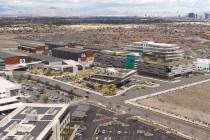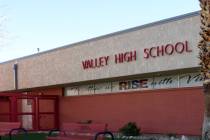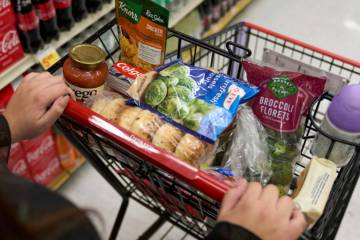Nevada gives most school districts permission to bend COVID-19 rules
More than 70 percent of Nevada school districts, including the Clark County School District, have been granted leeway to deviate from state emergency directives issued during the COVID-19 pandemic.
Gov. Steve Sisolak has issued health and safety directives that affect school operations similar to those affecting businesses, including requirements around social distancing, room capacity and bus transportation.
Public and private schools as well as school districts are allowed to submit a “variance” request to waive certain requirements if they “impermissibly restrict educational opportunities for students,” according to a state request form. Schools must propose an alternative and outline how they would minimize any potential risk of coronavirus transmission.
The Nevada Department of Education reviews requests, which also must be approved or rejected by the state’s chief medical officer, Dr. Ihsan Azzam. The state received 73 variance requests from March 2020 through mid-January and approved 62 of them, according to information obtained by the Review-Journal through a public records request.
Among them was a Clark County School District variance request for school busing approved in August.
The vast majority of schools with an approved variance are operating with full-time in-person classes or under a hybrid model — a mix of in-person and distance learning — and many are in rural areas where rates of coronavirus are lower than in urban areas.
Some target individuals
Some variances don’t affect an entire school district. For example, employees who work directly with students who have special needs that require close contact may get flexibility on social distancing rules.
All told, 39 school districts, private schools and public charter schools had received at least one variance through mid-January. Some had more than one approved.
Of the state’s 17 public school districts, 12 — including the Clark County School District — had a variance approved. Two more districts — Pershing and White Pine counties — obtained a variance for just one or two schools.
Variances fall into three categories: social distancing, occupancy standards or transportation standards. All but six of the approved variances are related to social distancing or occupancy standards.
Sisolak’s directives require 3 feet of social distancing space between elementary and middle school students, and 6 feet for high school students and all employees. There’s also a 50-person limit or 50 percent capacity requirement — whichever is lower — in any given space at a school. And at least 3 feet of social distancing space is required between passengers on school buses.
To obtain a variance, officials must fill out a two-page request form from the Nevada Department of Education and Nevada Department of Health and Human Services. Variances can be approved with conditions or revoked at any time or if local health officials implement more restrictive requirements.
“The Nevada Department of Health and Human Services reviews each variance request to ensure the necessary protocols are in place to protect the health and safety of staff and students,” Azzam said in a statement to the Review-Journal. “Each school will continue to be monitored for adherence to mitigation measures, positive COVID-19 cases and potential outbreaks.”
UNLV epidemiologist Brian Labus, who serves on Gov. Steve Sisolak’s COVID-19 medical advisory team, said variances allow for tweaks to broad state directives to match local circumstances.
“We came up with general rules for all schools, but we recognize that every school district is a little different,” he said.
Labus said he hasn’t seen a list of variances, but many are just small changes. “The whole idea of a variance is you’re still doing things safely,” he said.
He said he doesn’t know how many other states are allowing for school variances during the pandemic, but the variance process is well established in government, such as for zoning restrictions.
Variances are particularly important for school transportation in rural areas of the state, Labus said, to allow school districts flexibility in order to use their existing number of school buses. In some cases, rural districts pick children who live an hour away from school, he said, unlike urban areas where multiple buses can cover a small area in a city.
Douglas Harris, an economics professor and director of the National Center for Research on Education Access and Choice at Tulane University in New Orleans, said nearly every state has similar waivers in place.
“Every school is in a different situation,” he said. “There has to be at least some flexibility in there.” But, he added, “You have to be careful about how far you go with that.”
Harris said it also depends on what’s being allowed under a variance and whether it’s necessary to school operations, noting social distancing within a classroom is the hardest area for schools to address.
CCSD plans for bus transportation
The Clark County variance, which was approved Aug. 24, the first day of the school year, is for school bus transportation.
The district has been operating under distance education for nearly a year, but is giving families of preschool through third grade students the option of participating in hybrid model instruction — two days a week of in-person classes and three days of distance learning — beginning March 1.
In a statement last week to the Review-Journal, the district said its transportation department consulted with the Southern Nevada Health District to develop its busing plan.
The health district recommended 50 percent capacity, or about 28 students, on general education buses for elementary, middle and high school students, the district said. That’s different than the Nevada Department of Education’s “Nevada’s Path Forward” plan, which says schools should allow one elementary student per seat on a general education bus, or 24 to 26 students, down from 77 to 84 normally.
“Since the SNHD recommendation differed from the Nevada Path Forward framework, CCSD applied for a variance,” the district said.
In its revised hybrid transition plan released this month, the school district said it will limit school bus capacity to 50 percent — about 28 students in a general education bus and four to six students in a special needs bus. A graphic was included showing one student per seat in alternating left and right positions.
Other schools with a variance
Officials at the Washoe and Nye county school districts both told the Review-Journal their variances relate to social distancing in order to serve students who have special needs. Both districts, which are operating with at least some in-person classes, received approvals in August.
The variances allow employees to get closer than 3 to 6 feet when helping students who need assistance with feeding and toileting, for instance, or have significant behavioral challenges.
It also allows employees to wear face shields instead of a mask when working with students who have speech and language needs.
Nye County School District, which has 5,000 students in several communities, received approval for two variances on social distancing and transportation.
“As a district, we will struggle to provide a free and appropriate public education and to fulfill the service requirements in our student’s IEPs (Individual Education Programs for special education students) and 504 Plans (similar plans to support students with disabilities) without this requested variance,” according to the request.
Faith Lutheran Middle School & High School in Las Vegas — the state’s largest private school, with about 1,900 students — received a variance approval in October. It allows the school to operate at 75 percent occupancy in each classroom and with only 3 feet of social distancing for every student.
Faith Lutheran began the school year with a hybrid model, but in January it brought about 87 percent of its students back for full-time in-person classes while the rest opted for distance learning.
Las Vegas Day School, a private school with about 760 students from preschool through eighth grade, submitted variance requests in November and January that were approved. It’s holding in-person classes five days a week.
The variances allow the school to add two additional students to each of four rooms — two elementary school Spanish rooms and two elementary school music rooms — above the state’s 50 percent capacity limit.
Each of the approximately 800-square-foot rooms was “slightly too small,” school Director Neil Daseler said.
Mountain View Christian Schools in Las Vegas, which have about 160 students in preschool through 12th grades, filed for a variance Aug. 5 and it was approved Aug. 7, Principal Raymond LeBoeuf said.
The school requested flexibility in two areas: to have slightly less than 6 feet of social distancing in two classrooms used by junior high and high school students, and to exceed a 50-person capacity for weekly chapel services and daily for lunch while maintaining social distancing.
The school has three lunch sessions daily, which range from 51 to 58 students each. Preschoolers eat in their classroom.
There are two chapel services Wednesday mornings — one with 101 preschoolers and elementary schoolers and one with 85 junior and senior high schoolers.
Two schools within the Roman Catholic Diocese of Las Vegas — St. Anthony of Padua and St. Elizabeth Ann Seton — have a variance that allows certain classrooms to exceed the 50 percent capacity limit while still maintaining 6 feet of social distancing space between students, diocese spokeswoman Rachel Wilkinson said.
St. Anthony of Padua requested a variance to accommodate four more students across two classrooms, while St. Elizabeth Ann Seton asked for a variance to accommodate a total of nine students across five classrooms.
“It is important to note that as part of reopening plans for the 2020-2021 academic year, all Diocesan schools maintain 6 feet of distance between students in all of our classrooms,” Wilkinson wrote in an email to the Review-Journal.
Odyssey Charter Schools submitted a variance request Sept. 9 and it was approved the following day, Superintendent Tim Lorenz said. It allows Odyssey to provide testing to kindergarten and first grade English language learners.
Also, “during the implementation of some students’ Individual Education Plans (IEP), there may be instances that require an adult to be closer than the 6-foot social distancing guidelines allow to provide IEP direct services,” he said via email.
Explore Knowledge Academy, a Las Vegas public charter school with about 800 students in kindergarten through 12th grades, received two variance approvals in September for social distancing requirements, “though we still maintain the 6 feet distance and use barriers when that distance cannot be maintained,” Superintendent Abbe Mattson said in an email last week to the Review-Journal. “Our intent for these variances was only for us to perform the required testing with our students.”
The school brought students to campus — kindergarten and first grade English language learners, and special education students — for one-on-one testing, Mattson said.
It’s currently using distance learning, but plans to bring back 20 percent of its kindergarten through 12th grade students to campus in March under a hybrid model with half-day sessions.
Contact Julie Wootton-Greener at jgreener@reviewjournal.com or 702-387-2921. Follow @julieswootton on Twitter.



